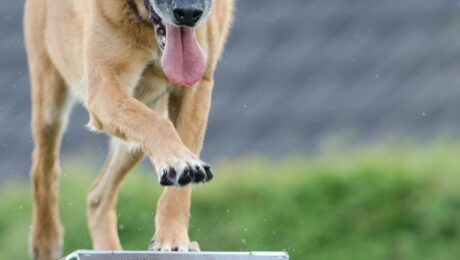The Best Pet-Friendly Vacation Destinations
Planning a vacation can be stressful enough without having to worry about leaving your furry friend behind. Luckily, there are plenty of pet-friendly vacation destinations that will welcome both you and your pet with open arms. From beautiful beaches to cozy cabins in the mountains, there is a perfect destination for every pet owner. In this blog post, we will explore some of the best pet-friendly vacation spots around the world, so you can plan a trip that includes your four-legged family member.
Asheville, North Carolina: Known for its stunning mountain views and vibrant arts scene, Asheville is also incredibly pet-friendly. Many hotels and restaurants in the area welcome pets, and there are plenty of hiking trails and parks where your furry friend can stretch their legs. Be sure to check out the Biltmore Estate, which allows leashed pets on the grounds.
Key West, Florida: If you’re looking for a tropical getaway with your pet, Key West is the perfect destination. Many hotels and guesthouses in Key West are pet-friendly, and there are several dog parks where your pup can play off-leash. Take a sunset cruise with your pet or simply relax on one of the island’s beautiful beaches.
Sedona, Arizona: With its stunning red rock formations and peaceful desert landscape, Sedona is a great destination for both humans and pets alike. There are numerous pet-friendly hiking trails in the area, as well as pet-friendly accommodations ranging from cozy cabins to luxury resorts. Don’t miss the opportunity to take a Jeep tour through the rugged terrain with your furry friend by your side.
Bar Harbor, Maine: For those who prefer cooler climates, Bar Harbor is a charming coastal town that welcomes pets with open arms. Enjoy scenic hikes in Acadia National Park with your dog or explore downtown Bar Harbor together. Many restaurants in town have outdoor seating areas where pets are welcome, so you can dine al fresco with your furry companion.
Vancouver Island, Canada: If you’re up for an international adventure with your pet, consider visiting Vancouver Island off the coast of British Columbia. The island boasts stunning natural beauty, including lush forests and pristine beaches where pets are welcome to roam freely. Stay at one of the many pet-friendly accommodations on the island and explore charming towns like Victoria with your four-legged friend.
Vacationing with your pet doesn’t have to be complicated or stressful when you choose one of these fantastic destinations that cater to both humans and animals alike. Whether you prefer mountains or beaches, cities or small towns, there is a perfect pet-friendly vacation spot out there waiting for you and your furry companion. So pack up Fido’s favorite toys and treats and hit the road for an unforgettable adventure together!
- Published in Pet Essentials
How to Deal with Common Pet Allergies
As pet owners, we adore our furry friends and want nothing but the best for them. However, dealing with pet allergies can be a frustrating and challenging experience. Whether you have allergies yourself or your pet is suffering from allergies, it’s important to understand how to manage them effectively. In this blog post, we will discuss common pet allergies and provide tips on how to deal with them so that you and your beloved pets can live a happy and healthy life together.
Identify the allergen: The first step in dealing with pet allergies is to identify the allergen causing the reaction. Common allergens for pets include pollen, dust mites, mold spores, and pet dander. If you suspect that your pet is suffering from allergies, consult with your veterinarian to determine the specific allergen causing the reaction. Your vet may recommend allergy testing to pinpoint the exact cause of your pet’s symptoms.
Keep your home clean: To reduce exposure to allergens, it’s important to keep your home clean and free of dust, pollen, and other irritants. Regularly vacuum carpets and furniture, wash bedding frequently, and use air purifiers to help filter out allergens in the air. Additionally, bathing your pet regularly can help reduce dander buildup and alleviate allergy symptoms.
Manage food allergies: Food allergies are another common issue among pets that can manifest as skin irritation or digestive problems. If you suspect that your pet has a food allergy, work with your veterinarian to identify and eliminate potential trigger foods from their diet. Your vet may recommend a special hypoallergenic diet or an elimination diet trial to pinpoint the specific food causing the allergic reaction.
Provide relief for skin allergies: Skin allergies are often characterized by itching, redness, and inflammation in pets. To provide relief for skin allergies, consider using hypoallergenic grooming products specifically designed for sensitive skin. Your veterinarian may also prescribe medications such as antihistamines or corticosteroids to help alleviate itching and discomfort.
Consult with a veterinary dermatologist: If your pet’s allergies are severe or difficult to manage, consider consulting with a veterinary dermatologist for specialized care. A veterinary dermatologist can conduct allergy testing, develop a customized treatment plan for your pet’s specific needs, and provide ongoing support to help manage their allergies effectively.
Dealing with common pet allergies can be challenging, but with proper management techniques and guidance from your veterinarian, you can help alleviate symptoms and improve your pet’s quality of life. By identifying allergens, keeping your home clean, managing food sensitivities, providing relief for skin issues, and seeking specialized care when needed, you can ensure that both you and your beloved pets can enjoy a happier and healthier life together despite any challenges posed by allergies.
- Published in Pet Essentials
Training Your Dog: Basic Commands Every Pet Should Know
Training your dog is not only important for their safety, but it also helps strengthen the bond between you and your furry friend. Teaching your dog basic commands can help them navigate the world around them and ensure they are well-behaved in various situations. In this blog post, we will discuss some essential commands that every pet should know to make both their lives easier and more enjoyable.
The first basic command that every dog should learn is “sit.” Teaching your dog to sit is a fundamental skill that can be used in many different situations. To teach your dog to sit, hold a treat in front of their nose and slowly move it up and back towards their tail. As their head moves up, their bottom will naturally lower into a sitting position. Once they are sitting, praise them and give them the treat. Repeat this process several times until they understand the command.
The next important command to teach your dog is “stay.” Teaching your dog to stay can prevent them from running into dangerous situations or getting lost. To teach this command, start by having your dog sit. Then, with an open hand facing them like a stop sign, say “stay” while taking a step back. If they stay in place, reward them with a treat and praise. Gradually increase the distance and duration of the stay as they become more comfortable with the command.
Another crucial command for dogs is “come.” Teaching your dog to come when called can prevent accidents or dangerous situations when they are off-leash. To train this command, start in a safe enclosed area like a backyard or living room. Call your dog’s name followed by the word “come” in an excited tone while backing away from them. When they reach you, reward them with treats and praise. Practice this command regularly in various environments to reinforce it.
The “down” command is also essential for dogs to learn as it can help calm them down or keep them out of trouble. To teach this command, have your dog sit first, then hold a treat close to their nose before lowering it straight down towards the ground between their front paws. As they follow the treat down, say “down” and reward them once they are lying down completely on their belly. With practice, they will learn to associate the word with the action.
Finally, teaching your dog the “leave it” command can be incredibly useful in preventing accidents or keeping them away from harmful objects or foods. Start by showing your dog a treat in one hand while saying “Leave it.” Close your hand if necessary to prevent them from grabbing it before rewarding them with another treat from your other hand for listening to you. Practice this command with different items until they understand that ignoring something earns them rewards.
Training your dog with basic commands is not only beneficial for their safety but also enhances communication between you and your furry companion. By teaching commands like sit, stay, come, down, and leave it early on in their training journey, you can set clear expectations and boundaries for behavior while strengthening trust and respect within your relationship. Remember that patience and consistency are key when training dogs; celebrate small victories along the way and always use positive reinforcement techniques for best results.
- Published in Pet Essentials
The Benefits of Pet Insurance and How to Choose the Right Plan
As pet owners, we want nothing but the best for our furry friends. From providing them with a loving home to ensuring they have a healthy diet and regular veterinary check-ups, we do everything in our power to keep them happy and healthy. However, unexpected accidents or illnesses can arise, leading to costly vet bills that can put a strain on our finances. This is where pet insurance comes in. In this blog post, we will explore the benefits of pet insurance and provide tips on how to choose the right plan for your beloved companion.
One of the main benefits of pet insurance is financial peace of mind. Just like health insurance for humans, pet insurance can help cover unexpected medical expenses for your furry friend. From emergency surgeries to chronic conditions, having pet insurance can help alleviate the financial burden of expensive vet bills. This can give you peace of mind knowing that you won’t have to make difficult decisions about your pet’s care based on cost.
Another benefit of pet insurance is access to quality veterinary care. With pet insurance, you can choose any licensed veterinarian, and rest assured that your furry friend will receive the best possible care without breaking the bank. This means you won’t have to compromise on your pet’s health due to financial constraints.
In addition to financial peace of mind and access to quality care, some pet insurance plans also offer coverage for preventive care such as vaccinations, flea and tick prevention, and annual check-ups. By investing in a comprehensive pet insurance plan, you can ensure that your furry friend stays healthy and happy for years to come.
When choosing a pet insurance plan, it’s important to consider factors such as coverage limits, deductibles, co-pays, waiting periods, and exclusions. Make sure to read the fine print carefully and compare different plans before making a decision. Additionally, consider your pet’s age, breed, pre-existing conditions, and lifestyle when choosing a plan that meets their specific needs.
Investing in pet insurance can provide invaluable peace of mind and ensure that your beloved companion receives the best possible care when they need it most. By following these tips on how to choose the right plan for your furry friend, you can rest assured that they will be well taken care of in case of unexpected accidents or illnesses. Remember that pets are part of our families and deserve the same level of care and protection as we do. So why wait? Consider getting pet insurance today and give your furry friend the gift of lifelong health and happiness.
- Published in Pet Essentials
Grooming Tips for Different Types of Pets
Taking care of our beloved pets involves more than just feeding and playing with them. Grooming is an essential part of pet care that helps maintain their health, appearance, and overall well-being. However, grooming needs can vary greatly depending on the type of pet you have. From dogs and cats to rabbits and birds, each animal requires a different approach to grooming. In this blog post, we will explore grooming tips for different types of pets to help you keep your furry (or feathered) friends looking and feeling their best.
Dogs: Regular grooming is important for dogs to prevent matting, reduce shedding, and keep their skin and coat healthy. Brush your dog’s fur regularly to remove loose hair and prevent tangles. Bathe your dog as needed using a gentle pet shampoo that won’t irritate their skin. Trim your dog’s nails regularly to prevent overgrowth and discomfort. Don’t forget to clean your dog’s ears and brush their teeth to maintain good oral hygiene.
Cats: Cats are known for being self-groomers, but they still need help maintaining their coat and claws. Brush your cat’s fur regularly to reduce shedding and prevent hairballs. Trim your cat’s nails every few weeks to prevent them from becoming too long or sharp. Clean your cat’s ears with a damp cloth to remove dirt and wax buildup. It’s also important to brush your cat’s teeth regularly to prevent dental issues.
Rabbits: Rabbits have unique grooming needs due to their delicate skin and fur. Brush your rabbit’s fur gently with a soft-bristled brush to remove loose hair and prevent matting. Check your rabbit’s nails regularly and trim them as needed to prevent overgrowth or injury. Keep your rabbit’s living area clean by spot-cleaning soiled areas daily and doing a full cage cleaning weekly.
Birds: Birds require regular grooming to keep their feathers in good condition and prevent health problems like obesity or fatty liver disease. Provide your bird with opportunities for bathing by misting them with water or offering a shallow dish for bathing. Trim your bird’s nails if they become too long or sharp, but be cautious not to cut the quick (blood vessel). Consider consulting a professional groomer or avian veterinarian for help with wing clipping.
Small Mammals: Guinea pigs, hamsters, and other small mammals also benefit from regular grooming practices such as brushing their fur, trimming their nails, cleaning their ears, and checking for signs of illness or injury.
Grooming is an important aspect of pet care that should not be overlooked regardless of the type of pet you have. By following these grooming tips tailored to different types of pets, you can ensure that your furry (or feathered) friends stay healthy, happy, and looking their best. Remember that each pet is unique in its grooming needs, so it’s essential to consult with a veterinarian or professional groomer if you have any specific concerns about caring for your pet’s coat, skin, nails, ears, or teeth.
- Published in Pet Essentials
Heartwarming Stories of Pets Rescuing Their Owners
We all know that pets have a special place in our hearts and homes, providing us with unconditional love and companionship. But did you know that they can also be heroes in times of need? In this blog post, we will explore some heartwarming stories of pets rescuing their owners and showcasing their incredible loyalty and bravery.
One remarkable story comes from a woman named Lisa who suffered from a seizure while alone at home. Her faithful dog, Max, immediately sprang into action by fetching her phone and pressing the emergency contact button with his nose. Thanks to Max’s quick thinking, paramedics were able to arrive in time to save Lisa’s life. This incredible bond between pet and owner saved the day in a moment of crisis.
Another touching story involves a cat named Tara who bravely defended her young human sibling from a vicious dog attack. The surveillance footage went viral, showing Tara fearlessly charging at the attacking dog and scaring it away. Tara’s heroic actions not only protected the child but also highlighted the protective instincts that pets can have toward their families.
In a different scenario, a man named John was out hiking with his loyal golden retriever when he fell down a steep ravine and broke his leg. Unable to move or call for help, John’s dog stayed by his side for two days until rescuers finally located them. The dog’s unwavering loyalty kept John warm during cold nights and provided him with comfort until help arrived. This story is a testament to the strong bond between humans and their furry companions.
One particularly heartwarming tale involves an elderly woman named Mary who got lost in the woods near her home. Her devoted cat, Whiskers, accompanied her on her journey despite never leaving the house before. Whiskers guided Mary back to safety by leading her through unfamiliar terrain until they were found by search parties. This extraordinary display of loyalty and bravery saved Mary from what could have been a dangerous situation.
Pets truly have an innate ability to sense when their owners are in trouble and will go above and beyond to protect them. These heartwarming stories remind us of the incredible bond we share with our furry friends and how they can be our heroes when we least expect it.
The stories of pets rescuing their owners serve as powerful reminders of the deep connection we share with our beloved animals. Whether it’s through acts of bravery, loyalty, or instinctive protection, pets have shown time and time again that they are more than just companions – they are true heroes in our lives. Let these heartwarming tales inspire us to cherish our furry friends even more and appreciate the special bond we have with them.
- Published in Pet Essentials
- 1
- 2







